Moving From Learning to Executing
Dec 2, 2022
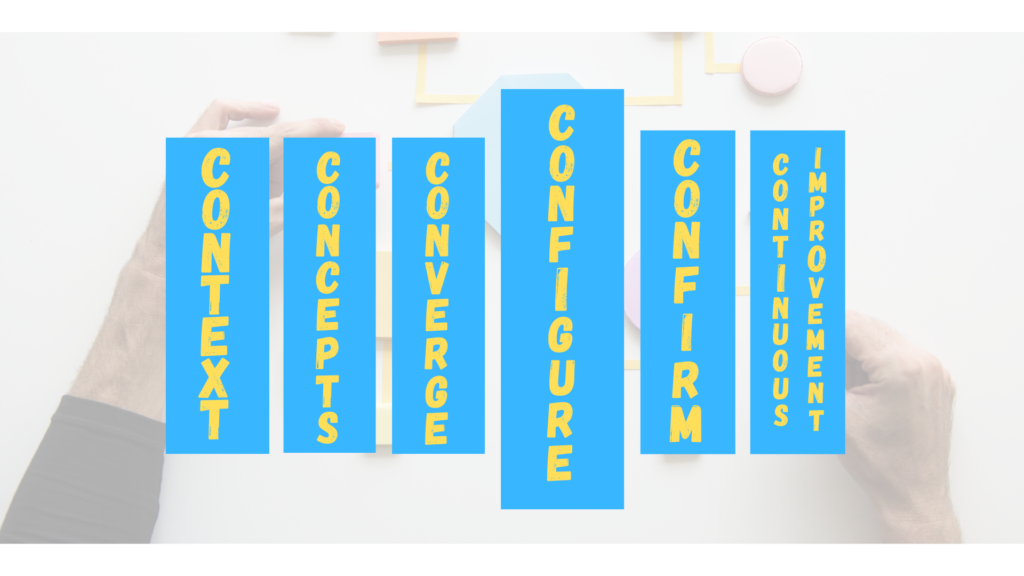
SERIES – The authors discuss the fourth of six elements in their 6CON process development model – CONfigure – refining the selected process concept to maximize value-added activities.
Words: Matt Zayko and Eric Ethington
“There’s no magic in magic, it’s all in the details.”
– Walt Disney –
THEY CALL ME “MR. LEAN”
Actually, no one called him Mr. Lean. He was our new head of manufacturing engineering, a “lean expert”, and he was unknowingly causing trouble. One of us received a call from Steve, who was frantically telling me what Mr. Lean had done. Steve and the industrial engineering team had developed a new mock-up for the production of our next generation product. The mock-up embedded our most recent lessons learned for great process design, and Mr. Lean was asking, no, telling Steve and the team to change it.
In a week, Mr. Lean would be hosting a group of his executive peers at our site, and the plan was to review the mock-up and showcase all the great process design thinking we had in motion. Unfortunately, Mr. Lean’s ideas were nothing more than a bunch of tools and concepts loosely stitched together. The result was a U-shaped cell with multifunctional workers performing a rabbit chase with the waste of motion (re-fixturing) minimized.
Steve’s concern was that the guests would see how bad the modified mock-up was and question the skills of the entire team. I told him to calm down and make the changes Mr. Lean asked for. Not because they were good ideas, but because his peers also thought like Mr. Lean and would see nothing wrong with the revised mock-up. And with everyone in the room we would logically deconstruct the bad paradigms of Mr. Lean and his peers and show them what better actually looks like.
CONFIGURE
At this point in the cycle of developing your new process, we have now officially moved past the study phase and are now starting the execution phase with CONfigure. The operational declaration (OD) that was used to gather learning and align the team early on is now a “contract” to be transformed into a reality. As we work through the CONfigure phase, we will be constantly referring back to our established targets to see if the goals are being met. There is a lot of work to do.
To be frank, the detailed work required to do CONfigure rarely happens. And that is why there are lots of bad and mediocre processes out there, a few good processes, and the rare well-designed process. So think of this as a challenge, and prove us wrong. Design something great and invite us to see it.
QC-QC
A good place to start is with an operator-out approach. This simply means that our primary focus will be the value-added work of the operator and, secondarily, all other functional areas work will be defined to support the operator. How does the process design ensure the value-added operator will have exactly what they need, when they need it, as close as possible to their work zone?
 We like to call the 35-centimeter square directly in front of the operator the “green zone”. Presenting materials and tools directly into this space will minimize searching and reaches. Remember, we want busy hands, not busy eyes.
We like to call the 35-centimeter square directly in front of the operator the “green zone”. Presenting materials and tools directly into this space will minimize searching and reaches. Remember, we want busy hands, not busy eyes.
Additionally, this approach ensures that the term “functional support” actually means support. Otherwise, there is a risk of each function optimizing their work and ultimately burdening the operator with a variety of unrelated tasks. Go observe one of your current processes. How many additional instruction sheets or warnings have accumulated in the area? How long have they been posted? These are artifacts of problems left unsolved that are now burdening the operator. “Do the value-added work and simultaneously watch for these problems and tasks – all while maintaining takt.”
With this approach we lay the foundation to realize the two pillars of the Toyota House: Quantity Control and Quality Control.
CATEGORIZATION
As the operator’s standard work is developed, there are a couple of work-element types that will need to be acknowledged: cyclical and non-cyclical. (A side note: the terms cyclical and non-cyclical have been present in the industrial engineering and lean vernacular for years and are commonly used. Nevertheless, they are not completely accurate. Cyclical typically refers to work elements that repeat each work cycle, while non-cyclical refers to work elements that do not. CONfiguration done well actually makes non-cyclical work cyclical: it is just a longer cycle than the value-added work. A well-designed material delivery route is actually cyclical in its timing, with the cycle being measured in minutes or hours rather than seconds or minutes.)
Examples of cyclical work elements are:
- Get part and place in fixture.
- Insert component and cycle the machine.
Examples of non-cyclical work elements are:
- Exchange the empty parts container with a full one.
- Move finished goods pack out of the cell and bring in empty dunnage.
- Run a quality check on every 10th part.
CONfiguration requires us to knit together both types of work element along with the work of the equipment, minimizing instances of the machine waiting on the operator and the operator waiting on the machine. A work combination table can help us to “see” these issues and opportunities, leading to better work design.
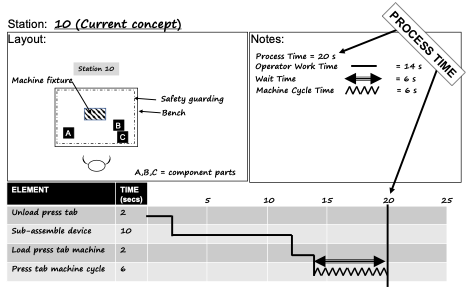
Ethington / Zayko, The Power of Process ©2022
Scrutinizing the work at this level of detail will reveal that some of these work elements should be handled by someone other than the operator. A common example is the replenishment of materials: asking the operator to leave their work area to acquire materials is akin to asking a surgeon to go look for a clamp. It interrupts the entire flow of the process and introduces opportunities for errors. Better to have the material presented in the right quantities and the right time. The same level of scrutiny we give to the work of the operator can also be placed on the non-cyclical work.
As the cyclical and non-cyclical work are considered together, the workplace may yet change, primarily fulfilling the needs of the operator, but also supporting the material handler’s work. An example might be the return slide for kanbans. Imagine an operator performing their standard work. They consume all of the parts in a tray, remove the tray and place it on a return rack. The next tray of parts is moved into location, but there is a kanban on it that needs to be removed and placed somewhere to reorder another tray of parts. Often some sort of ramp-like device or slide is employed. It needs to be easy for the operator to reach, but can it also be positioned to exit the back of the station in such a way that it is easy for material handler to locate and reach?
Another form of categorization that should be considered is common parts versus unique parts. In general, common parts are used on all final assemblies produced on a given cell. Unique parts are the parts that differentiate the final assemblies and must be changed out when we switch from producing one model to another. Unique parts need to arrive at the moment of the changeover whereas common parts are changeover agnostic. This implies two different material delivery route designs.
THE ALPHABET HAS MANY LETTERS
As the individual workplaces evolve, we can start thinking about how to position them relative to one another. Let the work reveal the best shape for the cell. Although much has been written about U-shaped cells, they are not the only acceptable shape. If there are a lot of materials being delivered at a high rate, a straight cell (I-cell?) might make more sense. With a lot of machine cycle time relative to the manual time, a U or half circle may start to form.
A well-designed cell needs a flow of parts, sub-assemblies, tools, and other resources both inbound and outbound. Adding another level of detail to the future-state value stream map, creating a connection map, makes the CONfiguration a holistic system. We are designing a whole value stream, not merely installing an isolated cell.
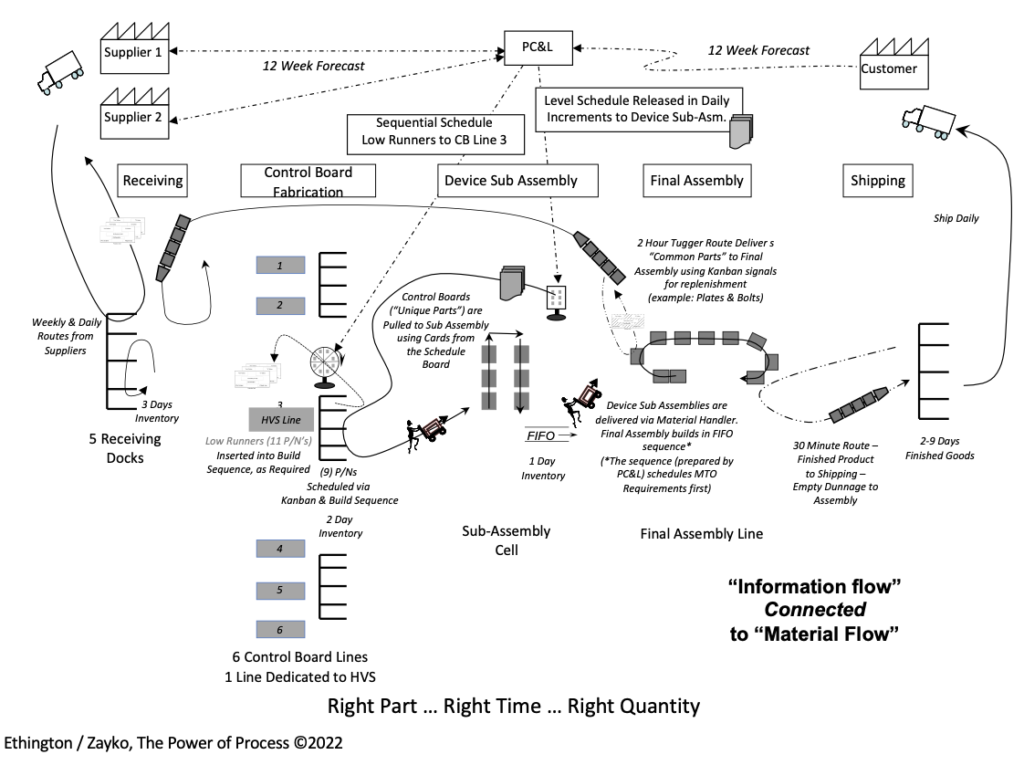
No amount of preplanning will eliminate all issues. Problems will arise. So, we need to deliberately design a “help system” that supports those working in our newly designed process, one that can provide help, quickly, without the operator having to leave their work area.
THERE IS NO MAGIC….
This brings us back to the Walt Disney quote at the beginning of this article, “There is no magic in magic, it’s all in the details.” Great processes do not happen by accident, and they cannot be created by the loose implementation of your favorite set of slogans. What worked in one area may not necessarily work in another. But what always works is getting into the details of the value-creating work and expanding outwards from there defining the supporting work and the process, and so on.
TEACHING THE NEW DOG NEW TRICKS… MOSTLY
A week later Mr. Lean and his peers came and went, most of them with their paradigms changed for the better: 6 out of 8 isn’t bad. As we suspected, their first impressions of the mock-up were very positive. Then we made them learn the jobs, count the motions, include material presentation and delivery, and consider the flexibility to efficiently produce at a range of volume scenarios. It was counterintuitive, but the cell went from 4 stations to 5 (yes, a person was added), but the number of motions required to do the work dropped 40% and the productivity increased 130%. This was a turning point for our organization’s understanding and appreciation for great process design.
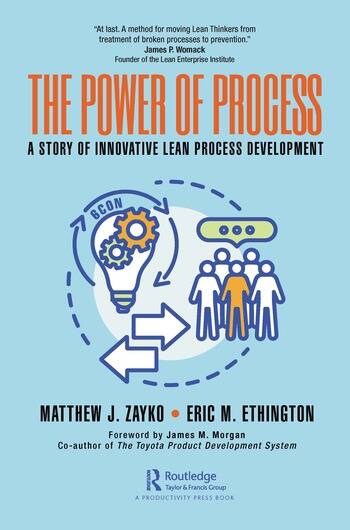
For more details, please visit www.thepowerofprocess.solutions
THE AUTHORS
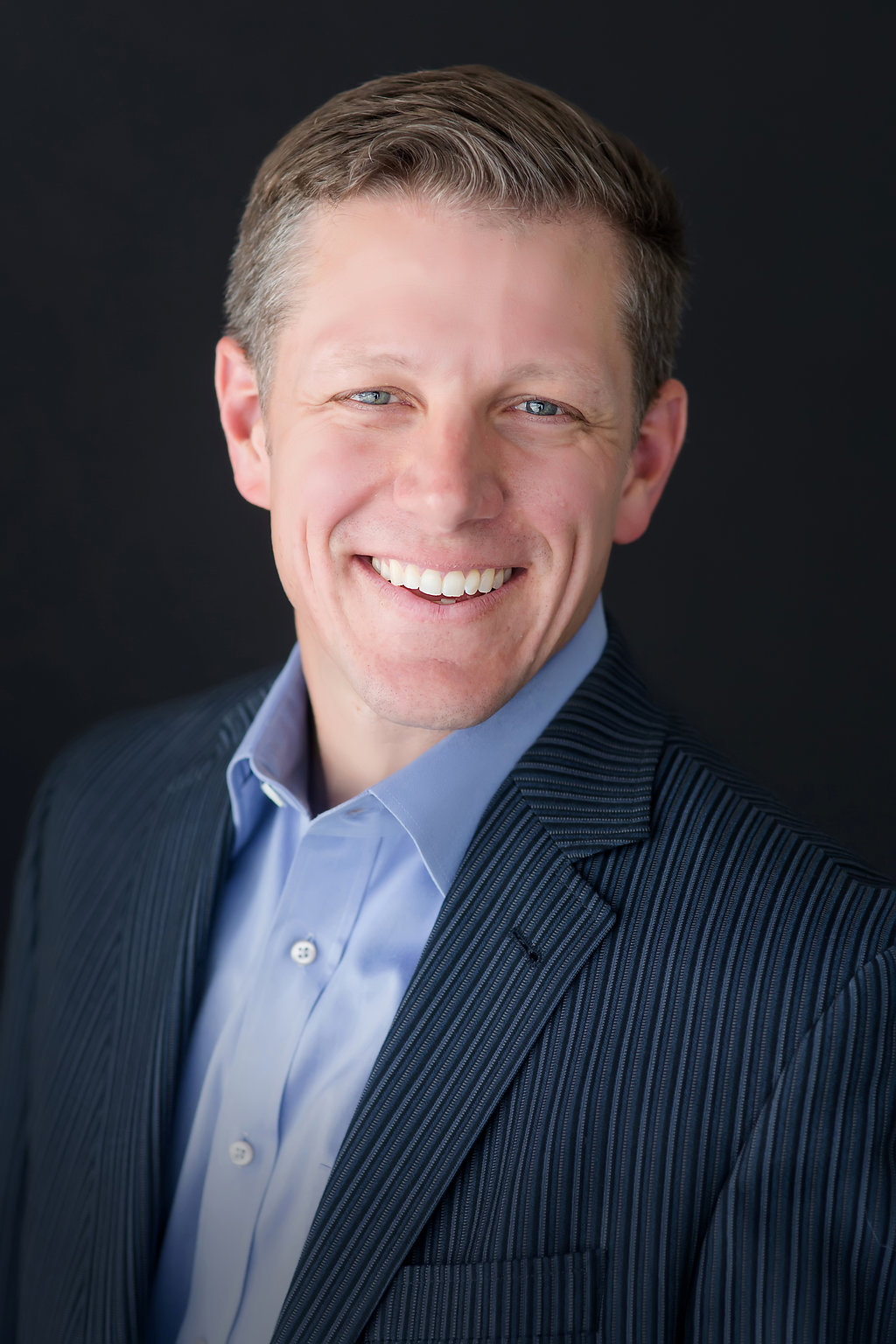
Matt Zayko is Lean Leader at GE Hitachi Nuclear Energy.

Eric Ethington is a Senior Lean Coach and Program Manager, Lean Product and Process Development, at the Lean Enterprise Institute.
Original Article: https://planet-lean.com/configuring-a-lean-process/
Stay In Touch.
Subscribe to our newsletter and exclusive Leadership content.
